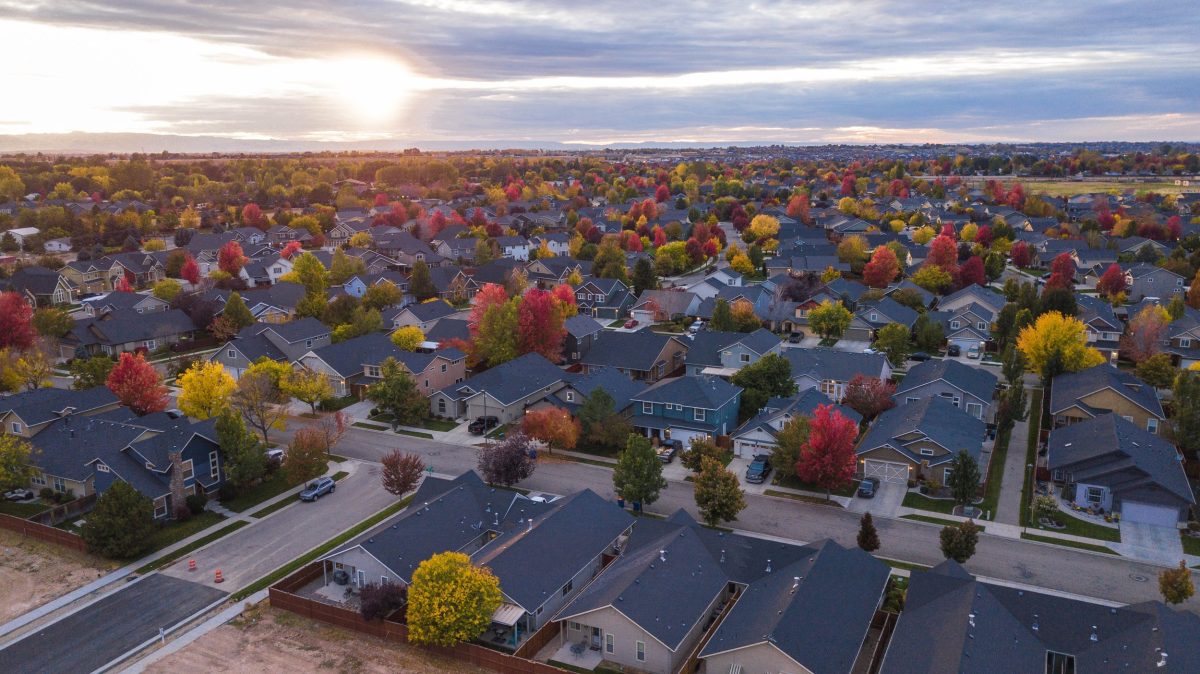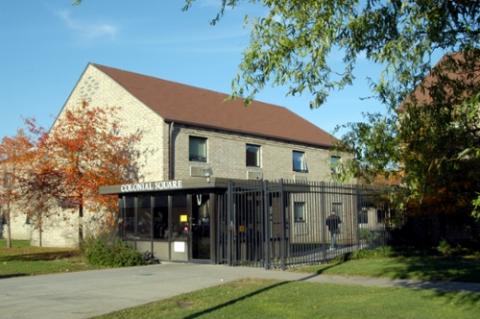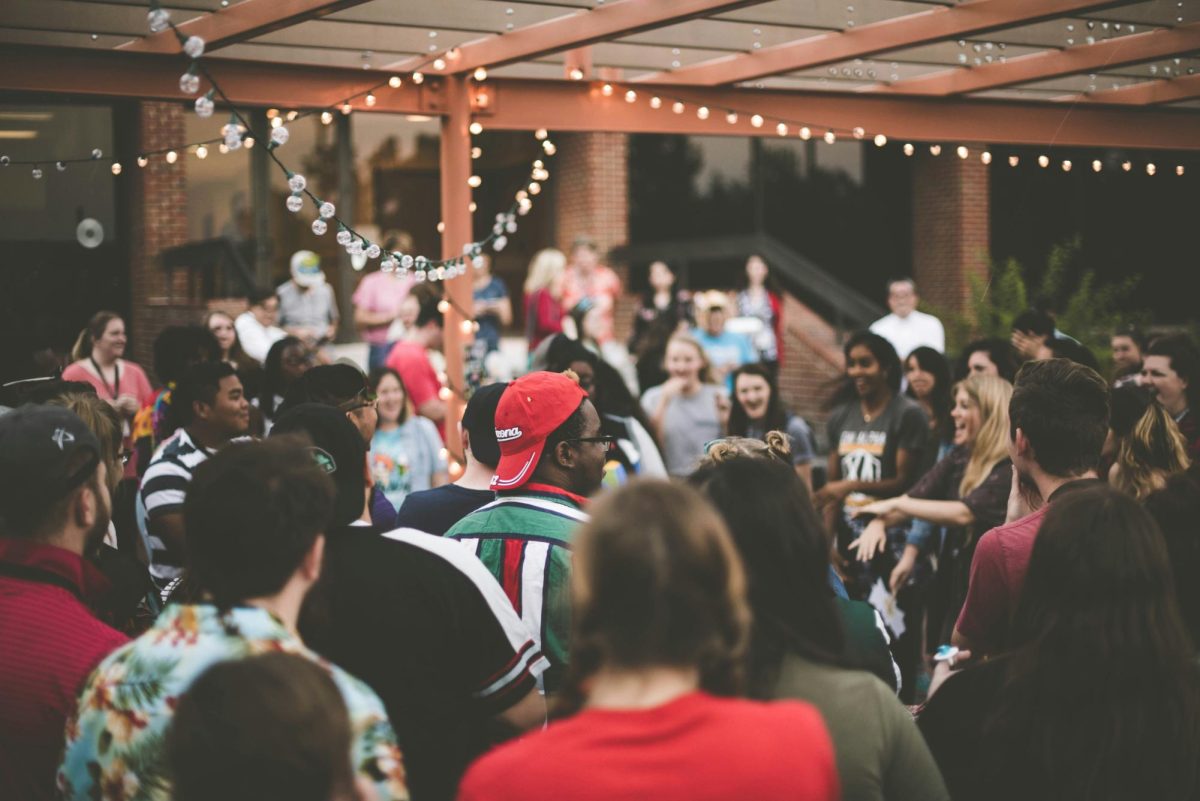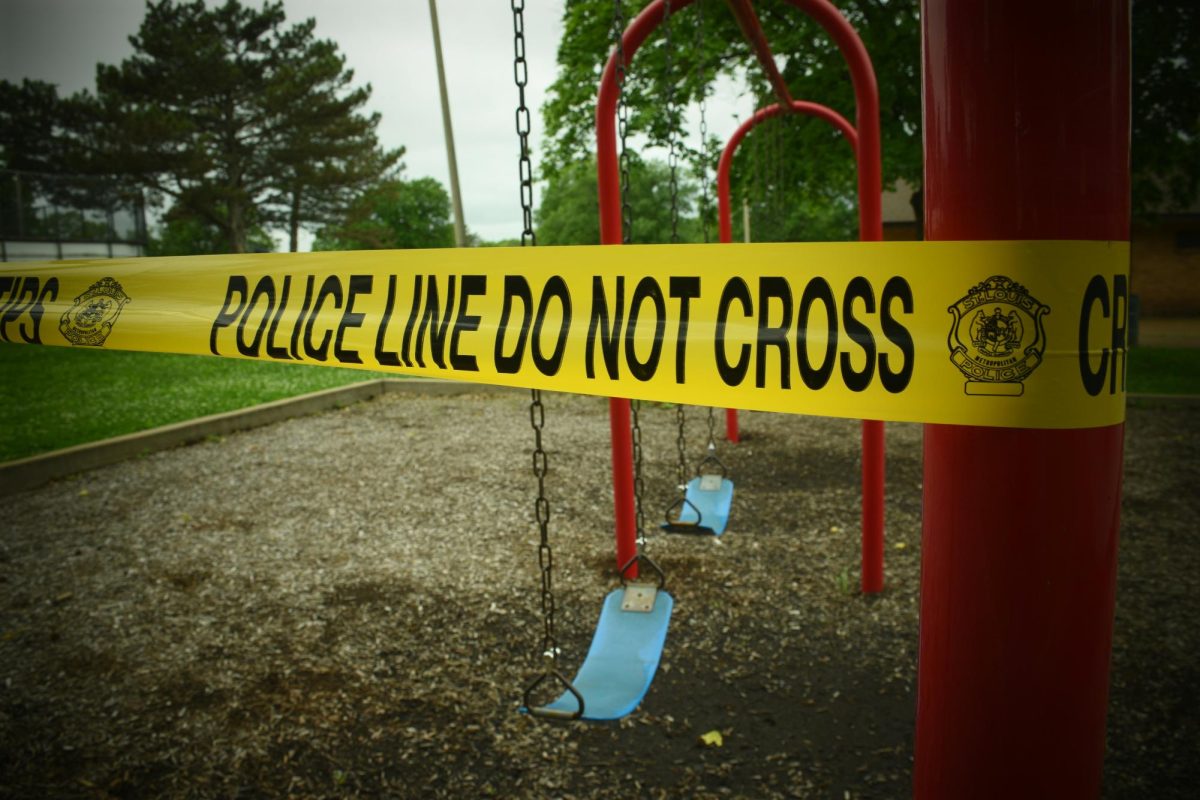Photo courtesy of Jimmy Conover on Unsplash
The suburbs account for a large portion of American neighborhoods, but while suburbia has an undeniable allure, its effects on its inhabitants’ mentality are detrimental to American society. From its racist foundation, the suburbs have been stripping Americans of community and creating isolated, uncaring people.
The suburbs are a collection of property in a lush area, with expansive yards and usually equally large housing. Suburban neighborhoods are usually organized in a cul-de-sac format, with long, winding roads, as opposed to the grid-like format most cities follow. This format makes most suburbs not walkable, requiring a different method of transportation, like cars or bicycles, to travel through the area. There is often no public transportation in a suburb, meaning that the transportation etiquette and safety for working or potentially living in a city that city-dwellers learn from a young age is lost on people who grow up in these neighborhoods. The lack of public transportation also requires that most people own a car, which is not only expensive but also a large contributor to pollution.
Public parks are not a common thing in both cities and suburbs, but in the suburbs, there aren’t often as many cafes or corner stores that can take the place of a park for children, or anyone, to meet up with one another. Because of this, most suburban towns have a Facebook page or other social media forum for residents to post or complain to the whole town about whatever is on their minds. This page can quickly turn from a page about important information to a page about petty issues, such as kids riding bikes through a street they don’t live on or how people allow their gardens to grow. This kind of online vitriol about meaningless things can easily spread through a town, creating an air of pettiness.
This isolation can be traced to the beginning of the suburbs in the history of redlining. According to NPR, redlining was a phenomenon where the Federal Housing Administration denied mortgage insurance to members of neighborhoods primarily composed of African Americans and other people of color. This was due to their belief that people of color lowered the value of the property in which they invested. This belief, while unsubstantiated and now proven untrue, also led to people of color being barred from buying houses in the suburbs, which were mainly composed of white residents.
While redlining is now illegal, its effects continue to live on. Suburban neighborhoods continue to be predominantly white. Property in these neighborhoods tends to be incredibly expensive, and the racial wage gap, as well as other forms of systemic racism, are large hurdles for people of color trying to buy property in the region.
However, a lesser-known contributing factor to the attitude in the suburbs is the idea that because the town is wealthier, schools there have better funding. According to Assurance Financial, one of the main reasons people move is to be in a better school district for their children. This leads to many people moving into the suburbs for their children to have a good education – not necessarily because they want to be there. Not many people who move in for that reason care about bettering the town, instead only caring that their child has a good experience.
I am from a suburb myself, and in my suburb, there are no sidewalks and few streetlights. The issue of adding sidewalks or lights to increase safety is a constant debate in my town and is constantly turned down.
People will claim sidewalks are too expensive, but when the local high school asks for a large sum of money for any reason, people suddenly have no issue raising taxes. They don’t care about making the town safer or more walkable; they only care about the school that their children attend getting whatever funding it needs to help their child succeed. Someone wanting their child to succeed is not a bad thing, but when it’s all they care about, they lose the sense of shared responsibility that residents of a town need to feel for one another which makes a town thrive.
Not only are suburban residents physically distanced from one another, but the culture, history and continuation of the suburban ideology have also kept people mentally distanced. However, as someone who grew up in a suburban town, I don’t believe that suburbs are a lost cause.
If people took the time to organize more open community events, attended town meetings instead of complaining online and tried to connect with one another, the suburbs could take the first major step toward reformation for the better.








andrewTFcoen@gmail.com • Oct 26, 2023 at 12:51 am
?? You’re barely from the suburbs if your suburb has only a few traffic lights and no sidewalks. And people move to the suburbs for the better school districts, which is the headline but all-encompassing. Talk to parents. The better school districts are better funded, have higher academic standards, much less troublemakers/distractions/crime. Have you read about NYC Public Schools in the last 20 years, or even in the last 4? And people complain online about things in cities too, not just the suburbs. Suburbs are more connected because it’s a smaller area to cover, people know each other compared to a large city. A city having a Starbucks doesnt solve any so-called isolation at all, if anything those people go there to be on their laptops with their headphones on to avoid the homeless/drug addicts from bothering them. To remove isolation requires more organized social activities- period, regardless of where they’re located. Get off the phone and talk to people in person. The suburb is not the obstacle of that.